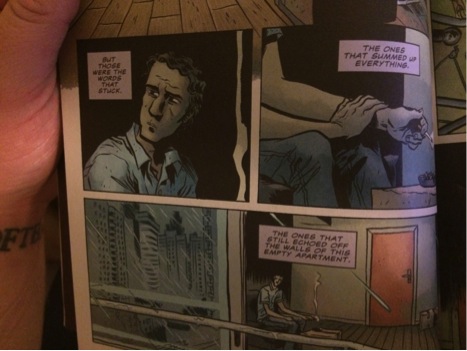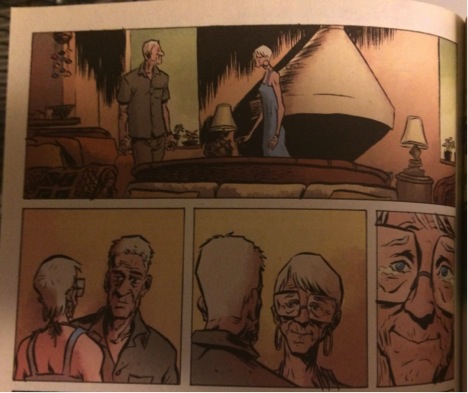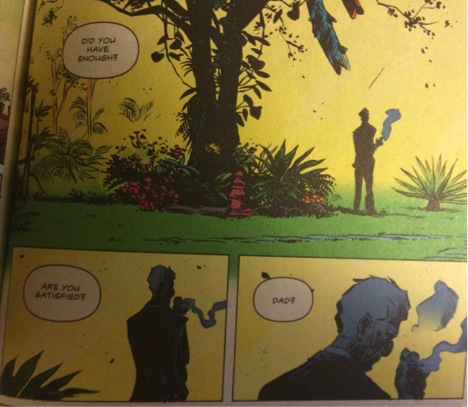Daytripper hit the comics industry like a punch to the gut in 2010. Garnering critical acclaim from reviewers and their peers, creators Fabio Moon and Gabriel Ba teamed up with Vertigo for this ten-issue series about the life and many deaths of an introspective obit writer who aspires to be an author. Like many of Vertigo’s best releases, much of the discussion around Daytripper has been centered on how grand a case the finished story makes for comics to be taken as “serious” literature. While I’d argue that any truly great comic – much like any good movie or any good book or any good television show, etcetera, etcetera – transcends its medium, that’s a bit beside the point. The focus on the conversations about how Daytripper and comics of its caliber are proof positive that comics = literature distracts from the heights to which these stories soar. Yes, obviously Daytripper, Sandman, Watchmen, and the classics canon of comics are every bit as valid as whatever your English teacher made you read. (As a former English teacher, I reserve the right to poke fun.) But that’s not the point, is it? Moon and Ba chose the beautiful medium of comics to tell their story, and to divorce Daytripper from its peers is doing a disservice to all involved – because Daytripper is both a comic book, and one of the best damn works of fiction I’ve ever read because of how it utilizes the strengths of this beautiful art form to build a story that broke my heart and put it back together.
Daytripper is the story of Brás de Oliva Domingos, the aforementioned obituary writer, and his life. Each chapter of this thick, lush volume tells a standalone story that finds Brás at a crossroads in his life. To say more about the concept, which is a stroke of brilliance in itself even before its terrific execution, would rob the reader of discovering it as I did. These fragments of Brás’s life don’t seem to fit together; until they do. The slow realization of what these chapters, which are damn good stories on their own, mean together is less the reveal of a mystery and more like the slow and burning self-discovery that everyone goes through as they age. We walk with Brás, sometimes divorced from his perspective and sometimes firmly in his shoes, growing with him, learning with him, and feeling with him. And that goes for both the emotional turns of the story, as well as every single page of art. The warm, intricate, and soft details of the art keep the eye moving slowly across the page, luring us in to the rhythm of Moon and Ba’s vision. I could get lost in any given page and, when I read it, I did just that over and over again.
What this series doesn’t have the gritty, literary horror of 90s Vertigo comics, or the sprawling, epic scope of some of the 00s epics from Vertigo. It is thoroughly unique, even at a publisher known for some of the most original works in the history of the medium. Though it’s a work of fiction, Daytripper feels like a diary; almost like a graphic memoir from Top Shelf. It taps into the questions that we ask ourselves about death and growing old every day, offering gentle what ifs without ever dulling the edge of the life’s harsher truths.
If you pick up the book, you’ll find a smattering of praise from names comics readers will know. Terry Moore, Craig Thompson, Gerard Way, Jeff Smith, and a bunch more. However, what really sums it up for me is the first work of a review not included on the back. It’s from Patrick Rothfuss, a novelist (The Name of the Wind – so good!), and I think I’ll end this with a word – a single word – from him.
“Damn.”
PAT SHAND was a comic book writer and pop culture journalist, but his heart could not take the weight of DAYTRIPPER. Some say he broke in two upon finishing it. Others say that he’s out there, somewhere. Probably in Acemira, crazy in a hut, sending postcards to Ba and Moon asking them “Why?” over and over.





Comments are closed.